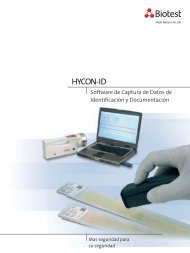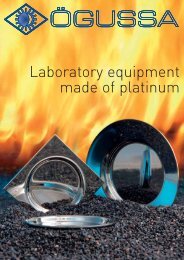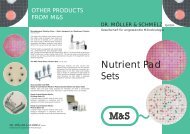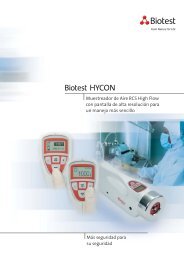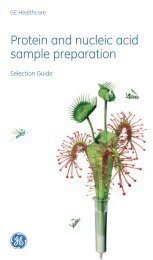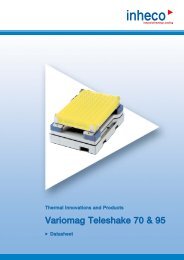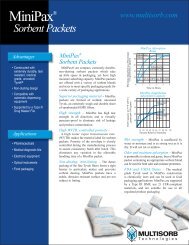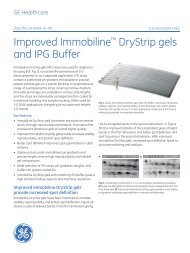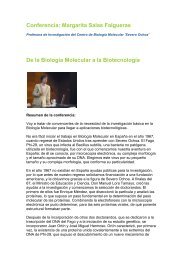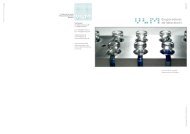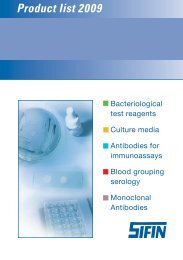Microplate Product Guide - Whatman
Microplate Product Guide - Whatman
Microplate Product Guide - Whatman
Create successful ePaper yourself
Turn your PDF publications into a flip-book with our unique Google optimized e-Paper software.
Filter Selection <strong>Guide</strong>FILTER MEDIA CHARACTERISTICSFilter Flow Protein Solvent Physical Thermal GeneralMedia Rate* Binding Hydrophilic Resistance Strength Resistance CommentsCellulose 4 High Yes Poor Brittle < 125° C Highly adsorptive membrane typically used forNitrate (CN)DNA/RNA/protein hybridization, also for ELISA andRIA based assays.Cellulose 3 Low Yes Poor Moderate < 120° C Typically used for low protein binding applications,Acetate (CA)good strength. General purpose microbiological filter.Polypropylene 2 Negligible No Very Good Good < 80° C Typically used for prefiltration. Sensitive to gamma(PP)sterilization. Very low extractables, chemically inert.Polyvinylidene 4 Low Yes Good Good < 135° C Low protein binding, good chemical resistance.fluoride(PVDF)Hydrophilic**Glass 5 Moderate Yes Very Good Poor High Wide range available. Typically used as absorptiveMicrofiberor adsorptive wicking media and prefilters. Excellent(GF)particle retention and resistance to clogging.Used for DNA binding.* Flow rate: 1 = low, 5 = high** Hydrophobic variants available for high protein binding.PLATE MATERIAL CHEMICAL COMPATIBILITYPlate Material Polystyrene Polypropylene Multi-ChemAcetic Acid R R RAmino Acids R R RButyl Alcohol R R REthanol R R RHydrochloric Acid R (30%) R RMethanol R R RAcetonitrile NR R RChloroform NR R RDichloromethan NR R RDMSO NR R RDMF NR R RDioxane NR R RMethylene Chloride NR R RPiperidine NR R RTHF NR R RToluene NR R RTFA NR R* RR = RecommendedNR = Not Recommended* Room Temperature, Short Term Resistant26 <strong>Microplate</strong> <strong>Product</strong> <strong>Guide</strong>





